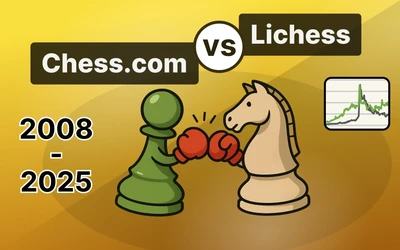
1859 engraving of Morphy, by Daniel Pound
Introducing "Morphy Simulator"
The best way to learn the fundamentals of chess strategy from Morphy's gamesWhat Morphy's games teach us
It is common advice that every beginner should study Morphy games. I completely subscribe to that advice, as his games teach us the power of development, what threats are good or bad, and how to play dynamically - all crucial skills for any chess player. Moreover, if you dig deep, you can see that he had a mastery of closed and open positions. He knew how to attack with a space advantage. He showcases us the way to win a game with opposite sides castling. He had good endgame technique.
Perhaps the most instructive aspect of his games though is that his opponents were bad. While Morphy would be playing chess "correctly," his opponents played horribly throughout! They lost tempi left and right. They would weaken their king unnecessarily. They wouldn't develop their pieces. So Morphy's games not only show us how to play well, but also how NOT to play well. Inevitably, Morphy would smackdown his opponents flaunting the chess principles, highlighting exactly how to refute poor play. Talk about a useful skill for beginners!
Introducing "Morphy Simulator | Play like the legend"
To better help beginners understand Morphy's play, I put together "Morphy Simulator" across the last six months. This lichess study is essentially a full chessable course, highly interactive, targeted for beginners all the way up through lichess players < 2000, and completely free! As you play through Morphy's games, I provide a lot of helpful tips that are both relevant to the chapter themes or simply useful information in general.
As an example PRO TIP: When you have a lead in development, blast open the position. Sometimes this means a pawn break. Sometimes this means a sacrifice. Your developed pieces will only be able to generate game-winning threats once you open up lines for them. For more details, see Chapter II.
Please check out the study! It has already made the lichess staff picks!
Part I is about chess fundamentals and designed for lichess players < 1700. In fact, I assume no knowledge of chess strategy when the reader first starts Chapter I: Opening Principles. So it really starts from the ground up. Chapter II and III build up core fundamentals like how to blast open the center when you have a lead in development and how to punish an opponent obsessed with moving their queen all over the board. Here's a direct link:
Part II is about attacking and defending and is designed for lichess players between 1500 and 1900. There is a step up in difficulty, as Morphy's opponents don't just roll over and die like they do in Part I. First, we discuss how to hunt a king running all over the board in Chapter IV. Next, Chapter V covers a crucial topic that is less often discussed: how to defend actively against an opponent trying to murder you from move 1. Chapter VI is all about the opposite sides castling race to checkmate. And finally, Chapter VII covers a specific type of attack spearheaded by an e5 lance pawn and a lasting space advantage. Here's a direct link:
In fact, this study is only about 2/3 of what I originally envisioned. Lichess limits studies to 64 chapters, so I had to separate Part III from what has been published so far because I couldn't fit everything in only 64. I'm still working on it, but Part III will cover middlegame and endgame strategy. The focus will not be on the vicious attacks Morphy was famous for, but rather how to play positions where there is no immediate attack. This is a harder study and will be best for lichess players > 1800. I'll assume you've already mastered the material in the first two parts before starting Part III. Stay tuned!
Why did I make this study?
Unfortunately, I've been disappointed by the offerings out there that walk beginners through his games. As a coach, it has been disappointing recommending "First Book of Morphy" to students when I felt like it was both lacking in instructional value and had too many variations for a true beginner. Other alternatives like "Morphy: Move by Move" are far too advanced for a beginner. If the target audience is beginners, we need a resource for beginners!
So I decided to take it upon myself to create the ultimate Morphy resource. "Morphy Simulator | Play like the legend!" is the result of six months effort. I hope you enjoy!
You may also like
 NoseKnowsAll
NoseKnowsAllFundamental rook endgames you must know!
Putting in a few hours is guaranteed to yield big results ChessMonitor_Stats
ChessMonitor_StatsWhere do Grandmasters play Chess? - Lichess vs. Chess.com
This is the first large-scale analysis of Grandmaster activity across Chess.com and Lichess from 200… CM HGabor
CM HGaborHow titled players lie to you
This post is a word of warning for the average club player. As the chess world is becoming increasin… NoseKnowsAll
NoseKnowsAllHow to develop plans on the board
Struggling with your middlegame strategy? Just follow these two rules! NoseKnowsAll
NoseKnowsAllAnalysis of the black side of the main line Catalan
A small story taking you through some knowledge I've gained in the Catalan thibault
thibault